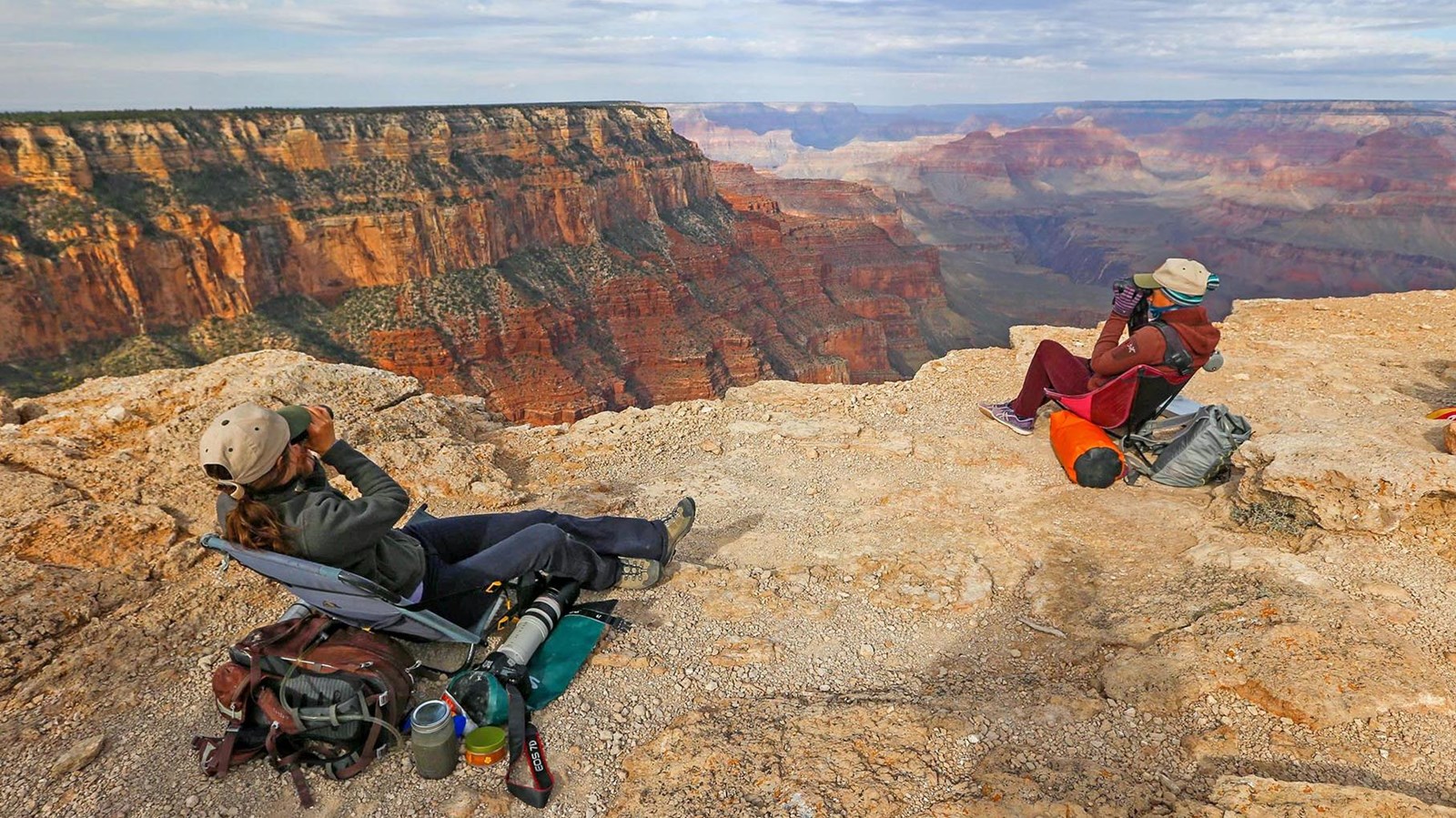Last updated: October 1, 2025
Place
Raptor Viewing Site (Yaki Point - South Rim)

NPS
Scenic View/Photo Spot
Raptor Migration Talk
NOTE: Raptor Migration Talks are not taking place during the government shutdown.During September and October, a variety of raptors and other birds soar southward over Grand Canyon, following the 'Central Flyway', a migration route that extends from the northernmost expanses of Canada's boreal forests down to Central and South America.. Learn about their remarkable journey, and why we count them every fall. Presented by Hawkwatch International biologists.
When: Friday, Saturday, Sunday and Monday: 10:30 am & 2:00 pm (duration: 30 minutes) Note: Programs may be cancelled due to inclement weather.
Location: Yaki Point on the South Rim. (September 12, through November 3, 2025)
To access Yaki Point, park at the Visitor Center and take the Kaibab Rim (Orange) Route shuttle bus to Yaki Point.(The buses run every 15 minutes from 6 am until on hour after sunset) NO VEHICLE PARKING at Yaki Point: buses provide the only form of motorized transportation.
After this introductory talk, interested visitors may accompany the Hawkwatch International (HWI) biologists, to the Raptor Monitorig Site, a short walk southwest of Yaki Point. You are welcome to stay for a few minutes or an hour for a guided spotting session. Learn about raptor ecology, and identification, along with HWI's ongoing research efforts.
It is also possible to visit the Raptor Monitoring Site on you own. The site is staffed daily By HWI biologists, between 9 am and 4 pm. The site offers spectacular views of raptors from above and below, with an average of 8000 sightings each fall.
Come 'HawkWatch' With Us!
Learn how to identify raptors. Help observe and record species, sex, age, color morph and behaviors of seasonal migrant raptors.
It's possibe to stay for a few minutes or for an hour or two. The site offers spectacular views of raptors from above and below, with an average of 8000 sightings each fall.
At least 19 species of raptors fly through the Grand Canyon including Sharp-shinned, Cooper's, Red-tailed, Swainson's, Broad-winged, and Ferruginous Hawks; Bald and Golden Eagles; Peregrine and Prairie Falcons; American Kestrel, Osprey, Northern Harrier, Merlin, Northern Goshawk, and the California Condor.
For those wanting to stay a while, here are some items to bring with you:
- Binoculars
- Bird Field Guide
- Folding chair
- Water (plenty of water!)
- Food/snacks
- Hat and sunscreen
- Sunglasses
- Dress in layers (windshell, base layer, jacket, gloves, etc.)
- Camera
Follow the Hanging Signs from Yaki Point to the Raptor Viewing Site
A narrow, unpaved trail leads across the rocky, uneven ground through a sparsely forested area with low desert scrub. The trail's width varies from a foot to three- to four-feet (1- to 1.2 m) wide along a gentle downward sloping surface.Caution is advised as you move along the trail across flat limestone rocks and smaller six- to eight-inch (15- to 20 cm) loose rocks strewn in the path. Note there are no railings or ropes on the platform to prevent accidental slips and falls on the loose footing, so exercise extreme caution when approaching the rim.
The trail leads 200 feet (60 m) to a wide open flat-topped mesa, 15-feet (5 m) wide by 40-feet (12 m) long.
Information collected by HWI is used to monitor long-term trends in raptor populations and identify the effects of the environment and humans on these high-flying inhabitants of the sky.
- Although not officially monitored by HWI, Lipan Point, about 13 miles farther east on Desert View Drive, is also a good spot for watching these fall migrants wing their way to warmer climates.
Background Story
30 years ago, birders along the South Rim of Grand Canyon noticed and reported raptor migration, which resulted in HawkWatch International (HWI) establishing an official monitoring station at Yaki Point, a scenic overlook along Desert View Drive, east of Grand Canyon Village.Transcript
There is no narration for this video. An audio-described version has been provided.
- Duration:
- 1 minute, 29 seconds
Every year during spring and fall, raptors join other birds in migrating to and from breeding grounds. Grand Canyon has served as an important monitoring site for this migration since 1991. The mission of HawkWatch International is "to conserve our environment through education, long-term monitoring, and scientific research on raptors as indicators of ecosystem health." Take a Minute Out In It to join volunteers as they record hawks passing over the Canyon, a daily task during September and October.
